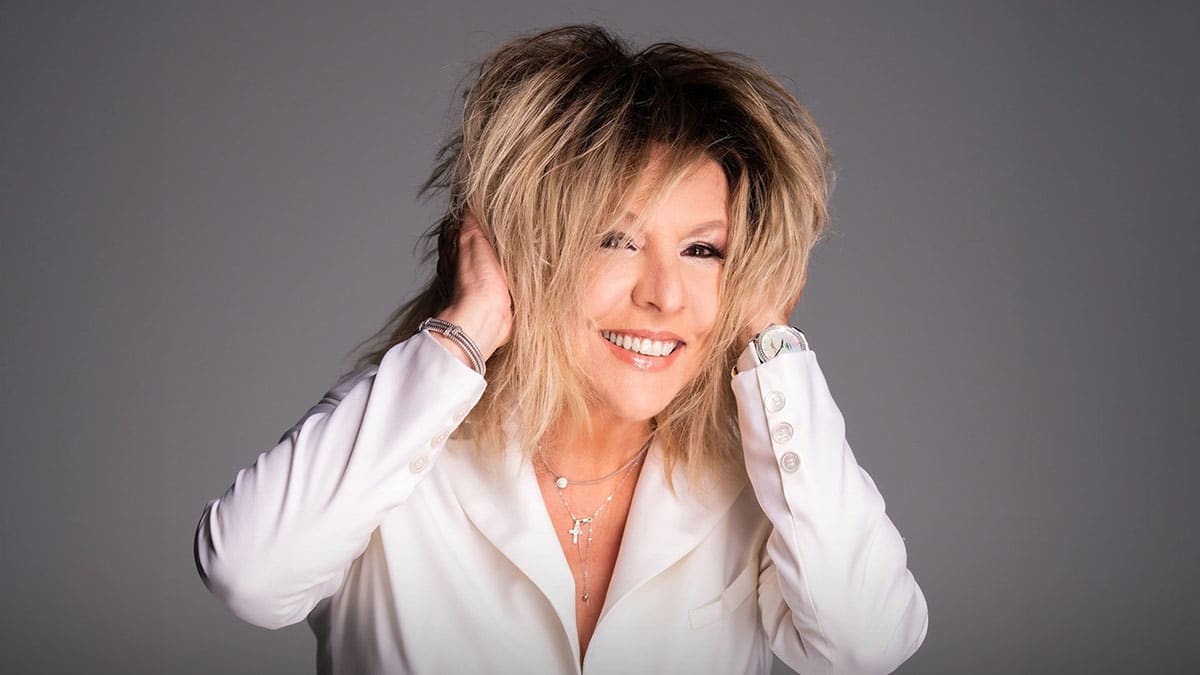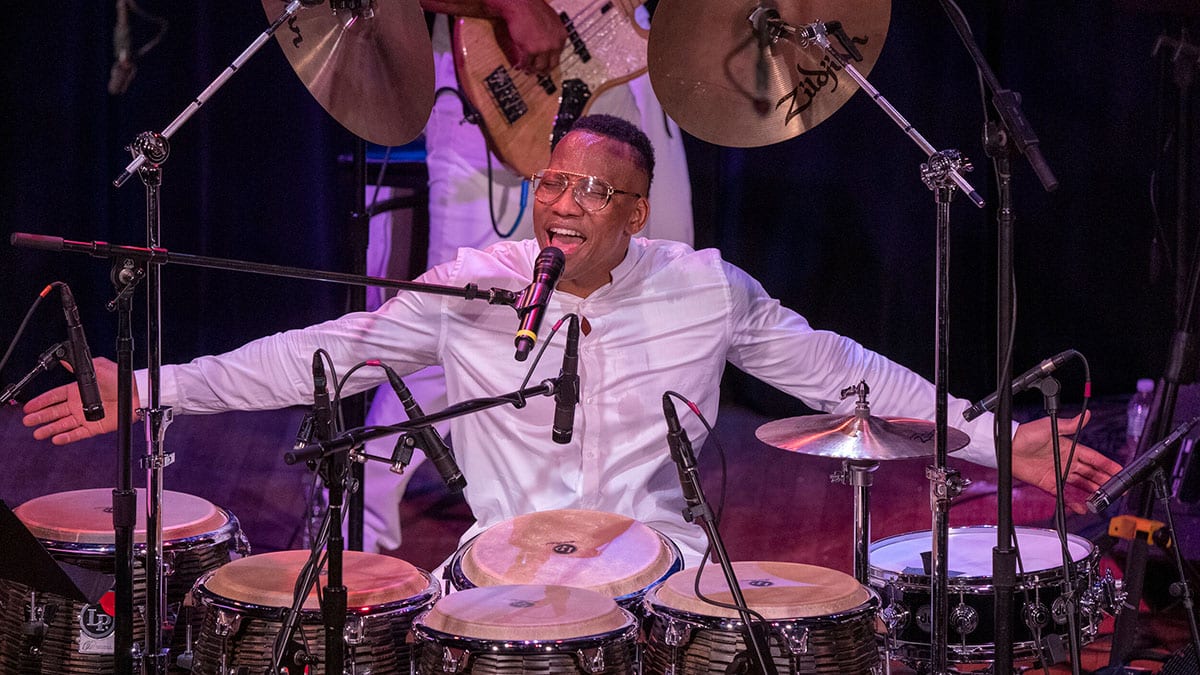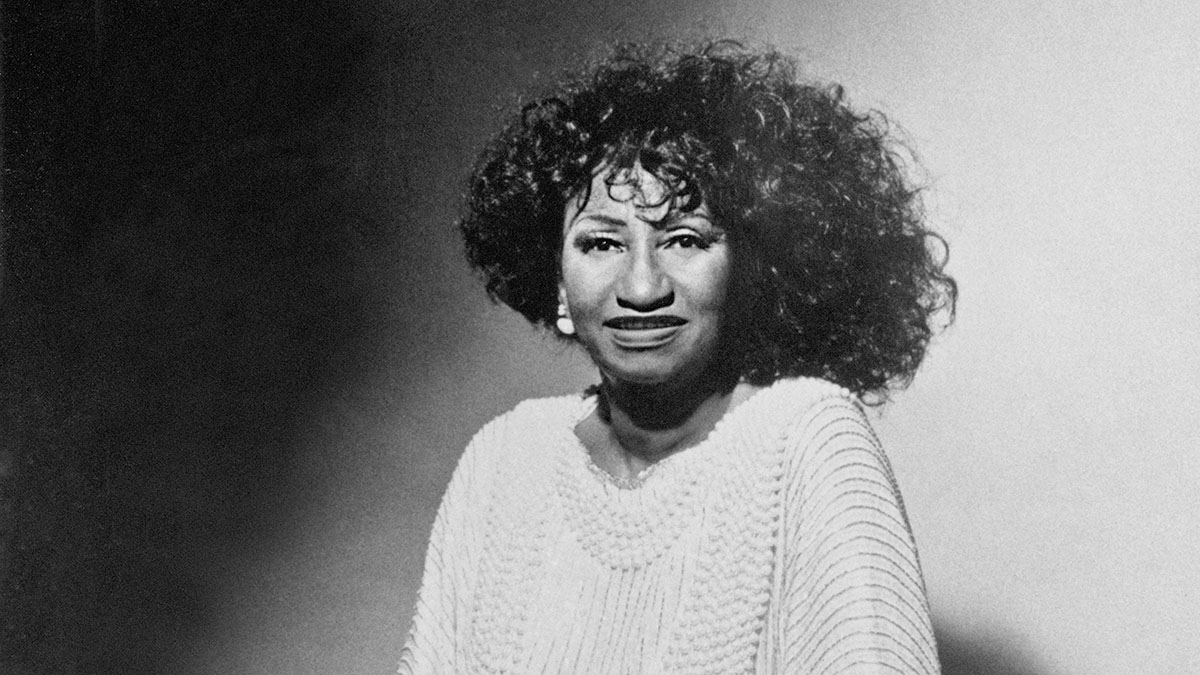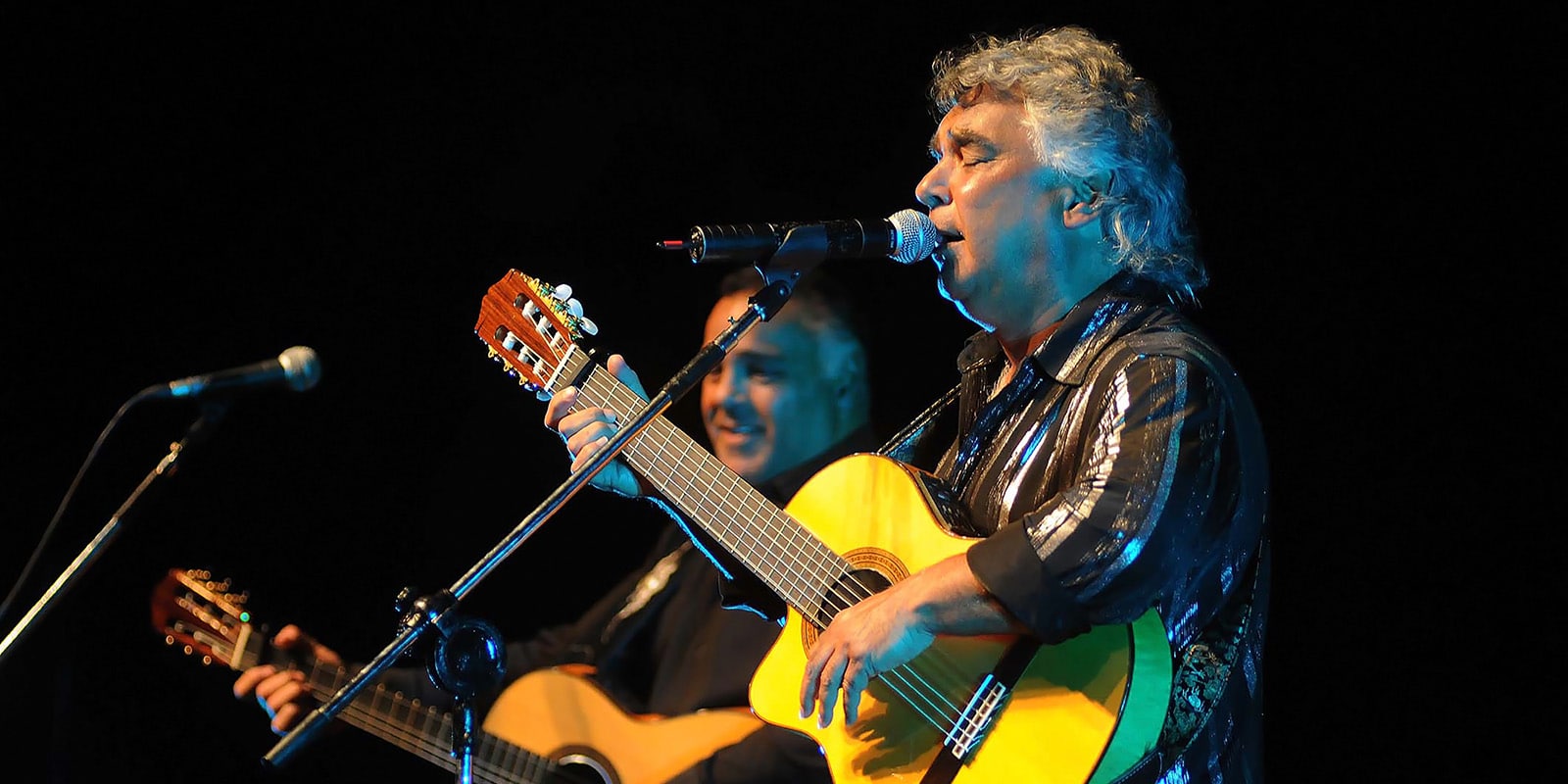New York Rumba is the root of much of what we call “Latin Music” today. Rumba means “party.” It is an Afro-Cuban drum, song and dance tradition that is one step removed from the sacred traditions of the African Diaspora and Mother Africa. It’s how the community gathers to express family, faith, community and love.
There isn’t much traditional Cuban Rumba in New York City. As far as we know, Central Park Rumba or Prospect Park Rumba are closest to the tradition. There is probably some in Union City, New Jersey, the heart of Cuban NYC. New York Cuban percussionist and leader Pedrito Martínez is the world’s 1st call Rumbero. Really!
Ballroom Rumba and the 1950s Rumba dance craze are not Cuban Rumba. New York Salsa on 2 is closer to Rumba clave. The core of Rumba is the syncopation of clave rhythm (pa-pa-pa, ta-ta OR pa-pa, ta-ta-ta). Rumba further syncopates the 3-side of Son Clave, so it’s pa-pa-UGH-pa. Ya.
Most of what artists play today is Rumba Fusion. In Puerto Rico, we say: Rumba, Bomba, Plena, Salsa. That’s really how Salsa developed.
NYC Rumba
- Pedrito Martínez
- Román Díaz
- Xiomara Laugart
Rumba Legends
- Celia Cruz
- Chano Pozo
- Daymé Arocena
- Eddie Bobè
- Los Muñequitos de Matanzas
- Miguelito Valdés
- Mongo Santamaría
- Raíces Habaneras
* Thank you for sponsoring New York Latin Culture Magazine!
Rumba NYC News
Daymé Arocena, “Cuba’s Finest Young Female Singer,” Joins Sofía Rey for a Night of Folk & Futurism
HOSTOS CENTER, Mott Haven, The Bronx 🇨🇺
Pedrito Martinez is the World’s First-Call Rumbero
BLUE NOTE, Greenwich Village, Manhattan 🇨🇺
Celia Cruz, “The Queen of Salsa,” Popularized Latin Music Around the World
HAVANA, Cuba, October 21, 1925 🇨🇺
Gipsy Kings Featuring Nicolas Reyes Play French Rumba Flamenca at City Winery
Friday, January 27, 2023
CITY WINERY
Chelsea, NYC
🇪🇸🇫🇷
January 2023
Pedrito Martinez and his rumba bring Echoes of Africa to Drom in the East Village on Sunday, January 15, 2023 at 8:30pm (7:30pm doors). From $25. 🇨🇺
The Gipsy Kings, featuring Nicolas Reyes, play French rumba flamenca at City Winery in Chelsea, NYC; on Friday, January 27, 2023 at 7pm and 9pm. 🇪🇸🇫🇷
December 2022
Pedrito Martinez plays a Cuban Rumba and Timba Holiday Show at Drom in Manhattan’s East Village on Thursday, December 15, 2022 at 7pm. From $30. 🇨🇺
Pedrito Martinez plays a Cuban rumba and timba Pre-New Year’s Eve Party at Drom in NYC’s East Village on Friday, December 30, 2022 at 9pm. Party starts with a Shani Talmor salsa dance class at 7pm. From $25. 🇨🇺
September 2022
Pedrito Martinez‘ Spring Rumba Con Fundamento concert, is streaming from Harlem Stage from September 24 – October 3, 2022 for just $5. harlemstage.org 🇨🇺
Roman Díaz, one of NYC’s top rumberos, plays Cuban Rumba at Mi Salsa Kitchen in the Lower East Side on Wednesday, September 28, 2022 from 8:30-11pm. 🇨🇺
Xiomara Laugart, the Nueva Trova star, sings Cuban Rumba on Friday, September 30, 2022 from 9-11pm. A DJ spins until 2am. 🇨🇺
Let’s Dance
When Africans first arrived in Cuba, the first thing they probably did was pray. Sacred drums made by the hands of Africans from Africa are still preserved in Cuba. The second thing they probably did was Rumba which means “party.” It is how we turn sorrow into joy, and we’ve had to do a lot of that.
In Cuba, Rumba evolved into Son (Cuban Salsa) and then Timba. In Puerto Rico, we say “Rumba, Bomba, Plena, Salsa.” That is a fair description of how Salsa developed in New York City.
There are many similar traditions around the Latin world: Bomba in Puerto Rico, Cumbia in Colombia, Tambor in Venezuela, Samba in Brazil, Festejo in Peru, Rumba Flamenco in Spain and France, and others. All are different branches of the same root, the Fon, Kongo and Yoruba traditions that grew in the Americas. Nowadays, what we call Lucumí or Yoruba, is actually a blend of these traditions.
To our hearts, Rumba is spiritual. If you are open to La Rumba, it can change your life. It changed ours.
Rumba is a party, but in African Diaspora tradition, singing, drumming and dancing together is how we pray. We sing about the saints a lot, but it’s no different from Europeans singing the “Ave Maria.” Cuban Rumba still feels spiritual, but Puerto Rican Rumba is just a party.
Traditional Rumba is voice and chorus; or voice, chorus and percussion from Matanzas, Cuba. Call and response singing and clave rhythms are essential. If you find yourself in a Rumba, stand near the drummers or in the middle of the singers, and sing along with the chorus. It’s a transcendental experience. We become one. This is the Rumba.
In 2016, UNESCO named Rumba part of the intangible cultural heritage of humanity.
Our Rumba Roots
Rumba is an Afro-Cuban drum, chorus and dance tradition that is one of the roots of Latin music. Rumba means “party.”
The three Rumba dances are Guaguancó (a playful courting dance in Cuba), Yambú (a sensual dance where the dancers pretend to be elders), and Columbia (a showy challenge between the dancer and lead drummer).
In Havana, Rumba from the west blends with Changüi from the east into Cuban Son dance music. In New York City Son Cubano mixes with 1940s Bebop and Swing into Latin Jazz (Cub0p). That evolves into Salsa in 1970s New York City. In Puerto Rico, Guaguancó is just another name for Salsa.
Cuban Rumba is the root. In fact, the core of Rumba, Clave, is the root of most Latin music in the Spanish language frame. It’s also the root of American Gospel music. You can take the Rumba all the way to Reggaeton and Latin Trap, and the social traditions are similar throughout. It’s been said that if you are not in trance, it’s not Rumba. Ashé.
Some of the best Salsa dancers dance on clave (1-2-3, 1-2 or 1-2, 1-2-3) – instead of in Salsa rhythm. We noticed the kids in Puerto Rico dancing this way. It is easier, slows down the movement and turns every measure of the music into a game. It Africanizes your motion (flatter, more grounded step), provides beautiful natural accents, and gives room for much more. It encourages upper-lower body separation. We noticed that Hip-Hop pop-locking flows naturally out of Rumba clave. It gets you. It moves you.
Pedrito Martínez and Roman Díaz are among NYC’s leading Rumberos.
In Cuba, Jennyselt Galata is a guardian of Rumba social traditions. Her home is a famous reservoir of African Diaspora religious traditions. She runs a beautiful school that is growing the next generation of Rumba dancers. Instagram @jennygalata
PS: The American Rumba ballroom dance has nothing to do with this.
The Deepest Roots
Colonizers claim everything as their own, but rumba doesn’t come from Spain. It’s easy to say that rumba is African, but it is one step removed from Mother Africa. The oldest drums in Cuba were indeed made by Africans, but rumba is the music of their children. It is Cuban.
A lot of human culture originates at home in traditions of faith, family, community and love. Rumba derives from beautiful Afro-Cuban religions such as Santería, but is purely secular. Many rumba musicians are also priests, but a rumba is just a party. Watch though, many drummers pray in private before they perform, and even secular dancers consider the dance circle (the “batey” in Puerto Rico) to be sacred space.
Today we associate congas (tumbadores) with rumba and Latin music, but rumba was originally played on boxes (cajones) or whatever was at hand, including the wall. The tradition appears in the 1880s after the end of human slavery, but before it was done at home in secret. Congas only appear in the early 1900s.
Cuban rumba has many traditions, but the three main arcs are guaguancó, yambú and columbia.
Guaguancó is a playful couples dance in which the man tries to “vacunao” (inject) the woman with his movements, while she avoids him. He mesmerizes her with slick dancing to provide cover for a hip thrust, flick of his hand or pointing of his toe. She jumps out of the way or covers herself with her hands or clothes. It’s good natured fun.
Yambú is a gentle couples dance that is very sensual, but danced with the slow moves of old people. You may see the man dancing with a cane.
Columbia is a dancer’s competition. There is a lot of shoulder movement and the dancer challenges the quinto, the lead drum, to match their movements. Dancers can get very expressive. Bomba Puertorriqueña is similar and somehow related.





